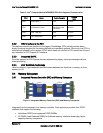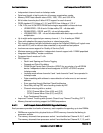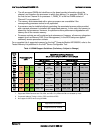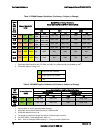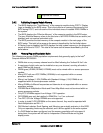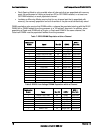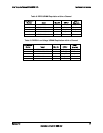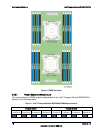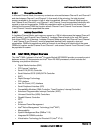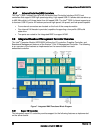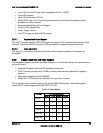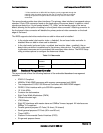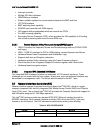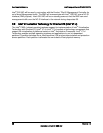
Intel
®
Compute Module MFS2600KI TPS Functional Architecture
Revision 1.0 19
Intel order number: G51989-002
3.4.3.2 Publishing System Memory
The BIOS displays the “Total Memory” of the system during POST if Quite Boot is disabled in
the BIOS setup. This is the total size of memory discovered by the BIOS during POST, and is
the sum of the individual sizes of installed DDR3 DIMMs in the system.
The BIOS displays the “Effective Memory” of the system in the BIOS setup. The term Effective
Memory refers to the total size of all DDR3 DIMMs that are active (not disabled) and not used
as redundant units.
The BIOS provides the total memory of the system in the main page of the BIOS setup. This
total is the same as the amount described by the first bullet above.
If Quite Boot is disabled, the BIOS displays the total system memory on the diagnostic screen at
the end of POST. This total is the same as the amount described by the first bullet above.
3.4.4 Memory RAS
3.4.4.1 RAS Features
The Compute Module supports the following memory RAS features:
Independent Channel Mode
Rank Sparing Mode
Mirrored Channel Mode
Lockstep Channel Mode
Regardless of RAS mode, the requirements for populating within a channel given in the section
3.3.3 must be met at all times. Note that support of RAS modes that require matching DIMM
population between channels (Mirrored and Lockstep) require that ECC DIMMs be populated.
Independent Channel Mode is the only mode that supports non-ECC DIMMs in addition to ECC
DIMMs.
For RAS modes that require matching populations, the same slot positions across channels
must hold the same DIMM type with regards to size and organization. DIMM timings do not
have to match but timings will be set to support all DIMMs populated (that is, DIMMs with slower
timings will force faster DIMMs to the slower common timing modes).
3.4.4.2 Independent Channel Mode
Channels can be populated in any order in Independent Channel Mode. All four channels may
be populated in any order and have no matching requirements. All channels must run at the
same interface frequency but individual channels may run at different DIMM timings (RAS
latency, CAS Latency, and so forth).
3.4.4.3 Rank Sparing Mode
In Rank Sparing Mode, one rank is a spare of the other ranks on the same channel. The spare
rank is held in reserve and is not available as system memory. The spare rank must have
identical or larger memory capacity than all the other ranks (sparing source ranks) on the same
channel. After sparing, the sparing source rank will be lost.



